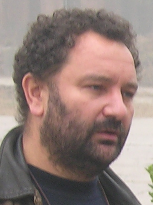I spent last September and October directing my first harvest in Xinjiang for Hong Liu He winery, in the outer reaches of Western China. I had a very different experience from the 12 years I have spent at Taillan winery just outside Beijing.
On one on hand, I have never started with equipment in such poor shape. We had to clean everything, clean it again, and clean it once more.
On the other hand, we had good grapes: no disease, a deep color for the reds, and sugar so high I thought I must be dreaming. Some of the red grapes had 270 grams of sugar, something I might find in Chateauneuf-de-Pape. Along with Cabernet Sauvignon and Cot, an Italian Riesling, we also had the Georgian grape Saperavi. This grape is a deep color and has high acidity, so high that it is appropriate if you think you can age the wine. We think we can.
As for the white grapes, the Riesling had less sugar, so I wanted to vinify it at 10 degrees Celsius. Unfortunately, we didn’t have the necessary cooling system, so we did it at 16 degrees Celsius, which means it will be less fruity than possible. We also had a grape from Russia called Rkatsiteli.
Overall, the quality of the grapes means these wines will be on a high level compared to others in China.
Making wine in Xinjiang is not easy for those who come from abroad. I spent two months in a village of one thousand people, who did their best to give me a good time. They were very nice, the food was good (lamb, lamb, and lamb), and I eventually got an Internet connection. Overall I found it a good experience and I look forward to people trying these wines.
More posts by Alain Leroux
